
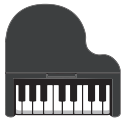
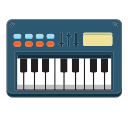

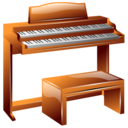
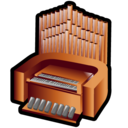


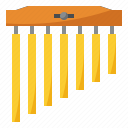





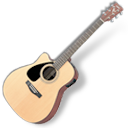
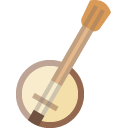

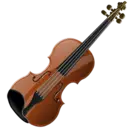
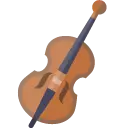
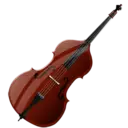






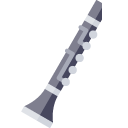







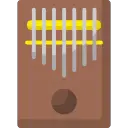






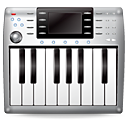









The piano is a descendant of the harpsichord and the clavichord. It was first invented in Italy in the early 1700s by a man named Bartolomeo Cristofori. His invention was called the 'gravicembalo col piano e forte,' which means 'harpsichord with soft and loud.' The name was later shortened to 'piano.'
The piano became increasingly popular in the 19th century, and it has since become one of the most commonly played instruments in the world. It has also undergone many changes and improvements over the years, with the addition of pedals, improvements to the hammer mechanism, and the use of new materials in construction.
Before we start learning how to play the piano, it's important to understand some basic piano terminology. Here are a few terms that you should be familiar with:
By understanding these basic piano terms, you will be better equipped to read and understand sheet music, which we will cover in more detail in later chapters.
In conclusion, the piano is a beautiful and complex instrument with a rich history and many unique features. By understanding some basic piano terminology and the instrument's history, you will be well on your way to becoming a successful pianist.
The piano keyboard is made up of a series of white and black keys. The white keys are called natural keys, and the black keys are called sharps and flats. The keyboard is divided into sections called octaves, which consist of eight white keys and their corresponding black keys.
The keys on the piano are numbered from 1 to 88, with the lower notes on the left and the higher notes on the right. Middle C is located near the center of the keyboard and is a good reference point for finding other notes.
Proper hand positioning is important when learning to play the piano. The fingers of the right hand should be placed on the white keys to the right of middle C, and the fingers of the left hand should be placed on the white keys to the left of middle C.
The thumb of each hand should be placed on a white key, with the other fingers following in order. The fingers should be slightly curved, and the hands should be relaxed, with the wrists slightly elevated.
Good posture is also important when playing the piano. Sit up straight with your feet flat on the floor, and make sure that the piano bench is at the right height. Your arms should be at a 90-degree angle, with your forearms parallel to the floor.
Try to keep your shoulders relaxed and your elbows close to your body. Avoid slouching or leaning too far forward, as this can put strain on your back and neck.
Now that you know how to position your hands and body at the piano, it's time to start practicing some basic exercises. Begin by playing the white keys in order from low to high, using one finger at a time. This will help you get used to the feel of the keys and the motion of your fingers.
Next, try playing simple scales using both hands. Start with C Major, which includes only white keys, and then move on to other scales that include black keys.
Remember to keep your hands and body relaxed as you play, and don't worry too much about speed or accuracy at this point. The goal is to get comfortable with the keyboard and develop good habits from the start.
In conclusion, proper hand positioning and posture are important when learning to play the piano. By practicing some basic exercises and getting used to the feel of the keyboard, you will be on your way to becoming a skilled pianist.
The notes on the piano are named after the first seven letters of the alphabet: A, B, C, D, E, F, and G. Each note has a specific name and is located on a specific line or space on the musical staff.
The musical staff is a set of five horizontal lines and four spaces, with each line and space representing a different note. The note names on the staff start with A on the bottom line and go up to G on the top line.
Notes can also be written on ledger lines, which are short lines added above or below the staff to accommodate higher or lower notes.
In addition to note names, it is also important to understand rhythm when reading music. Rhythm refers to the length of time each note is played, and it is indicated by the shape of the note.
A whole note is played for four beats, a half note is played for two beats, a quarter note is played for one beat, and an eighth note is played for half a beat. Rests, which indicate a pause in the music, are also indicated by different shapes.
The time signature is an important part of music notation, as it tells the musician how many beats are in each measure and what type of note receives one beat. The time signature is located at the beginning of the piece of music and is indicated by two numbers stacked on top of each other.
The top number indicates the number of beats in each measure, while the bottom number indicates the type of note that receives one beat. For example, a time signature of 4/4 indicates that there are four beats in each measure and that a quarter note receives one beat.
Reading music can seem overwhelming at first, but by breaking it down into its basic components, it becomes much more manageable. When reading music, start by identifying the note names and their placement on the staff.
Next, look at the rhythm of the notes and rests, paying attention to the shape and duration of each. Finally, check the time signature to understand the overall structure of the piece.
With practice, reading music will become more natural, and you will be able to play a wider range of pieces with confidence.
In conclusion, understanding music notation is essential for any pianist. By learning the basics of note names, rhythm, and time signature, you will be well on your way to becoming a skilled reader of sheet music.
Legato is a technique used to create a smooth, flowing sound when playing the piano. It is achieved by connecting the notes together without any gaps or pauses between them. To play legato, use the sustain pedal to keep the notes ringing and make sure that each note overlaps slightly with the next one.
Staccato is a technique used to create a crisp, sharp sound when playing the piano. It is achieved by playing each note with a short, detached sound. To play staccato, lift your fingers off the keys quickly after each note, without letting the notes ring together.
Finger exercises are an essential part of piano technique, helping to develop finger strength, dexterity, and flexibility. They can also be used to improve speed and accuracy when playing.
One of the most common finger exercises is the five-finger exercise, which involves playing a sequence of five notes up and down the keyboard with each hand. This exercise can be used to warm up before playing or to develop finger strength and agility.
Other finger exercises include playing scales and arpeggios, which can help to develop finger control and hand coordination.
When playing the piano, it is important to use a combination of playing techniques to create a dynamic and expressive performance. For example, a piece may require a combination of legato and staccato playing to convey a particular mood or feeling.
By practicing these techniques and incorporating them into your playing, you will be able to play with greater control, precision, and musicality.
In conclusion, mastering basic playing techniques is an essential part of becoming a skilled pianist. By learning to play legato, staccato, and incorporating finger exercises into your practice routine, you will develop the finger strength, agility, and control needed to play a wide range of music with confidence and expressiveness.
Before we begin, it is important to understand key signatures. Key signatures indicate the key of a piece of music and the notes that are used in it. For example, the key signature of C major has no sharps or flats, while the key signature of G major has one sharp (F#).
When playing major scales, the key signature will determine which notes to play and which fingers to use.
Each major scale has a specific fingering pattern that is used to play it. It is important to practice these fingerings until they become natural and automatic.
For example, the fingering for the C major scale is as follows:
Right hand: 1 2 3 1 2 3 4 5
Left hand: 5 4 3 2 1 3 2 1
The numbers indicate which finger to use, with 1 being the thumb and 5 being the pinky. When playing the scale, use the correct fingering pattern and keep your fingers close to the keys to avoid unnecessary movement.
To practice major scales, start with one scale at a time and work on playing it smoothly and evenly. Play each note with the correct finger and use the correct hand position.
Practice playing the scales with a metronome to help develop a steady tempo and consistent rhythm. Start at a slow tempo and gradually increase the speed as you become more comfortable.
It is also important to practice playing scales in different octaves and with different dynamics, such as playing them softly or loudly.
By practicing major scales regularly and using the correct fingerings and hand positions, you will develop the finger strength, dexterity, and coordination needed to play a wide range of music with ease.
Playing major scales is a great way to improve your technique, as well as your understanding of key signatures and music theory. By mastering the major scales, you will have a solid foundation for playing more complex pieces and developing your own unique playing style.
In conclusion, playing major scales is an essential part of piano technique. By understanding key signatures, using the correct fingerings, and practicing regularly, you will develop the skills needed to play a wide range of music with confidence and precision.
In addition to playing single notes and scales, chords are another important aspect of piano playing. Chords are groups of three or more notes played together and can add harmony, depth, and richness to your playing.
There are two basic types of chords: major and minor. Major chords sound bright and happy, while minor chords have a more melancholic and somber sound. To form a major or minor chord, start with a root note and add the third and fifth notes of the corresponding scale.
For example, to form a C major chord, start with the note C and add the third note (E) and the fifth note (G) of the C major scale. The resulting chord is C-E-G. To form a C minor chord, use the third note of the C minor scale instead of the major third. The resulting chord is C-Eb-G.
Chords can also be played in different positions or inversions, which means changing the order of the notes in the chord. Inversions can add variety and interest to your playing and can also make it easier to transition between chords.
For example, a C major chord in root position (C-E-G) can be played in first inversion (E-G-C) or second inversion (G-C-E). To play a chord inversion, simply move the bottom note of the chord to the top.
An arpeggio is a broken chord played one note at a time. Playing arpeggios can help develop finger dexterity and coordination and can also add a flowing and melodic quality to your playing.
To play an arpeggio, simply play the notes of a chord one at a time, either ascending or descending.
For example, to play a C major arpeggio, play the notes C-E-G one at a time in ascending order. To play a descending arpeggio, play the notes G-E-C.
To practice playing chords, start with simple major and minor chords and practice transitioning between them smoothly and evenly. Use the correct fingerings and hand positions and play each note with clarity and precision.
To practice playing inversions, start by playing the chords in root position and then gradually move to playing them in different inversions. Practice transitioning between inversions smoothly and use the correct fingerings for each inversion.
To practice playing arpeggios, start with simple chords and practice playing the notes one at a time, either ascending or descending. Gradually increase the speed as you become more comfortable and practice playing arpeggios in different keys and with different dynamics.
By practicing chords and progressions regularly and using the correct fingerings, hand positions, and inversions, you will develop the skills needed to add depth and richness to your playing.
Playing chords can also help you understand the harmonic structure of music and can make it easier to play a wide range of pieces.
In conclusion, playing chords and progressions is an important aspect of piano playing. By understanding major and minor chords, inversions, and arpeggios and practicing regularly, you will develop the skills needed to play a wide range of music with depth, richness, and melodic interest.
One of the most rewarding aspects of playing the piano is being able to play your favorite songs. When choosing simple songs to play, it's important to select pieces that are appropriate for your skill level. Look for songs with simple melodies, straightforward rhythms, and limited note ranges.
Some popular examples of simple songs include 'Happy Birthday,' 'Mary Had a Little Lamb,' and 'Twinkle, Twinkle Little Star.'
To play simple songs, it's important to be able to read sheet music. Review the information provided in Chapter 3 and practice reading simple melodies on the piano. Start by playing the right-hand melody and gradually add the left-hand accompaniment.
To practice playing simple songs, break down the piece into manageable sections and practice each section slowly and evenly. Use correct fingering and hand positions and play each note with clarity and precision. Gradually increase the tempo as you become more comfortable with the piece.
There are many popular melodies that are simple and fun to play on the piano. Some popular examples include 'Can't Help Falling in Love' by Elvis Presley, 'Let It Be' by The Beatles, and 'Clocks' by Coldplay. Look for sheet music or tutorials online to help you learn these pieces.
Playing holiday tunes is a great way to get into the festive spirit and impress your friends and family. Some popular holiday tunes include 'Jingle Bells,' 'Silent Night,' and 'We Wish You a Merry Christmas.' Look for sheet music or tutorials online to help you learn these pieces.
By choosing simple songs appropriate for your skill level, reading sheet music, and practicing regularly, you will develop the skills needed to play a wide range of music on the piano. Playing simple songs is a fun and rewarding way to improve your piano playing and impress those around you.
In conclusion, playing simple songs is a great way to improve your piano playing skills and have fun at the same time. By following the tips provided in this chapter and practicing regularly, you will be playing your favorite tunes in no time.
Establishing a regular practice routine is important for building good playing habits. Set aside a specific time each day for practice and try to stick to it as much as possible. Consistency is key when it comes to developing good playing habits.
Before beginning to practice, it's important to warm up your hands and fingers. Play some simple exercises and scales to get your fingers moving and ready to play.
During practice, focus on developing good technique. Pay attention to hand positioning, finger placement, and playing with correct posture. Practice playing both hands separately and together to improve coordination.
Break down difficult pieces into smaller sections and practice them individually. Gradually increase the tempo as you become more comfortable with each section. Don't move on to the next section until you can play the current one fluently.
Practice difficult passages slowly and evenly. This will help you build muscle memory and develop good technique. Gradually increase the tempo as you become more comfortable with the piece.
Recording yourself while practicing is a great way to identify areas that need improvement. Listen to your recordings and take note of any mistakes or areas that need more attention.
Taking breaks during practice is important for avoiding fatigue and preventing injury. Take a short break every 20-30 minutes to stretch and rest your hands.
Using a metronome is a great way to improve your timing and develop a steady tempo. Start by playing simple exercises with the metronome and gradually move on to more complex pieces.
Consistent practice is key when it comes to improving your piano playing skills. Try to practice for at least 30 minutes each day, and gradually increase the amount of time as you become more comfortable with your routine.
Remember to have fun while practicing. Playing the piano should be an enjoyable and rewarding experience. If you're not having fun, it's hard to stay motivated to practice regularly.
In conclusion, by establishing a regular practice routine, focusing on technique, breaking down difficult pieces, practicing slowly, recording yourself, taking breaks, using a metronome, practicing regularly, and having fun, you will develop good playing habits and improve your piano playing skills. Consistent practice and dedication are key when it comes to mastering the piano.